E²=ART – Expertise-Exchange Program in Advanced Research Techniques

What is E²=ART?
The Expertise-Exchange Program in Advanced Research Techniques Program (E²=ART) is a program organized jointly by two ILTS committees, the Basic and Translational Research Committee (BTRC) and the Education and Scholarship Committee (ESC), aiming to establish links between early-career researchers and international centers of excellence for training in specific research techniques. Examples might include hands-on training of 1-4 weeks in experimental liver transplant models, ex-vivo perfusion, omics methodologies, machine learning, single-cell biotechnology, hepatic and biliary tract organoids, RNA isolation from FFPE tissues, and many others.
Background
The 1980s saw rapid growth in the development of liver transplantation in North America and Europe, which depended critically on the commitment of pioneering teams to host assiduous international fellows who hoped to learn how to offer this innovative treatment to their local populations. Later, the dissemination of living donor techniques successfully implemented in the Western Pacific in the 1990s, which led to a radical change in the global availability of transplantation, was made possible by experienced teams welcoming highly motivated overseas visitors to their units. Many of these exchanges were both rewarding for the host and transformative for the learner, yielding lifelong bonds that continue to enhance research in our field decades later. Inspired by this legacy, ILTS is launching an exciting initiative to connect early-career liver transplant investigators with leading research centers around the world: the Expertise-Exchange Program in Advanced Research Techniques Program (E²=ART)*.
*ART: is a diverse range of (products of) human activities involving creative imagination to express technical proficiency, beauty, emotional power, or conceptual ideas (https://en.wikipedia.org/wiki/Art)
Why participate in the E²=ART Program?
Potential benefits for trainees, their home centers, and the wider transplant research community are clear as E²=ART enhances opportunities for talented early-career investigators and expands transplant research networks.
Training centers will also benefit: from enhanced reputation, promotion of research agendas, appeal to postgraduate degree candidates, and future international collaborations.
I am interested in the program as a trainee
Who is eligible to apply for a training visit?
- Fellows in clinical or basic science research, PhD candidates and early-career* faculty interested in visiting an ILTS-nominated laboratory for 1-4 weeks to learn a specific advanced research technique.
- Must be affiliated to a liver transplant center, research laboratory or university.
- Must be enrolled or intend to be enrolled in a research project in the field of liver transplantation (basic or clinical) that will use the specific research technique.
- Must be an ILTS member supported by a senior member and supervisor/mentor.
*either within their first five years after training, or 42 years or younger
How to apply for a training visit?
- Complete the online application form.
- Write a short proposal describing the research project using the technique in question.
- Choose a host laboratory from participating ILTS-nominated centers, or nominate another to be approached by ILTS.
- Provide an introductory letter giving professional background and motivation, and name the host laboratory.
- Provide a letter of support from a faculty-level mentor and/or supervisor.
- Provide a letter of support from a senior ILTS member (if the above supervisor is not a member).
- Post a summary CV (4 pages maximum) with a photo of the applicant.
I am interested in the program as a host institution
How are training centers identified?
- ILTS will establish criteria for a center to participate in the program, based on the center’s description of the technique, its relevance, and the highest level of practical training offered, as follows:
- Observer status with the potential to provide basic assistance
- Hands-on participation at a skilled assistant level
- Primary operator under direct supervision
- Primary operator with access to supervision
- Primary operator – supervision not required.
- Committee members will approach potential host centers and promote applications to participate in the program.
How to apply as a training center?
- Complete the online application form.
- Online applications from research institutions will be approved by the BTRC working group before posting with listed centers on a dedicated E²=ART page on the ILTS website.
- If appropriate, information will also appear under the named center’s entry on the ILTS Directory of Transplant Centers and Directory of Liver Transplant Fellowships.
- Both hosts and trainees will be expected to report on the outcomes of training, and positive commentaries will be acknowledged in ILTS member communications.
Funding and administration
How is the program administered?
- A designated group of senior BTRC members will oversee the program. They will report to the BTRC and ESC chairs and will work with all BTRC members to recruit host centers, evaluate trainee applications, and monitor feedback from both parties. The BTRC chair will assume overall responsibility and report to the ILTS executive and council.
- The ILTS secretariat will support the promotion of the program and application systems for trainees and training centers, maintain relevant committee records, and forward applications and queries to committee members.
How is the program funded?
- Currently, ILTS can only fund the administrative functions mentioned above. It cannot cover applicants’ or trainees’ expenses, although existing scholarships may be reallocated for this purpose in the future. However, specific funding may be available within a few years as the ILTS Members’ Fund for Education moves toward its $1 million capital target.
- Training centers will be asked to describe expenses related to administration, materials, technical support, and teaching and to share information about potential sources of financial support for applicants. They will be under no obligation to provide this support.
- Therefore, applicants will typically be expected to obtain their own institutional, research grant, or commercial funding, or to cover the costs themselves.





